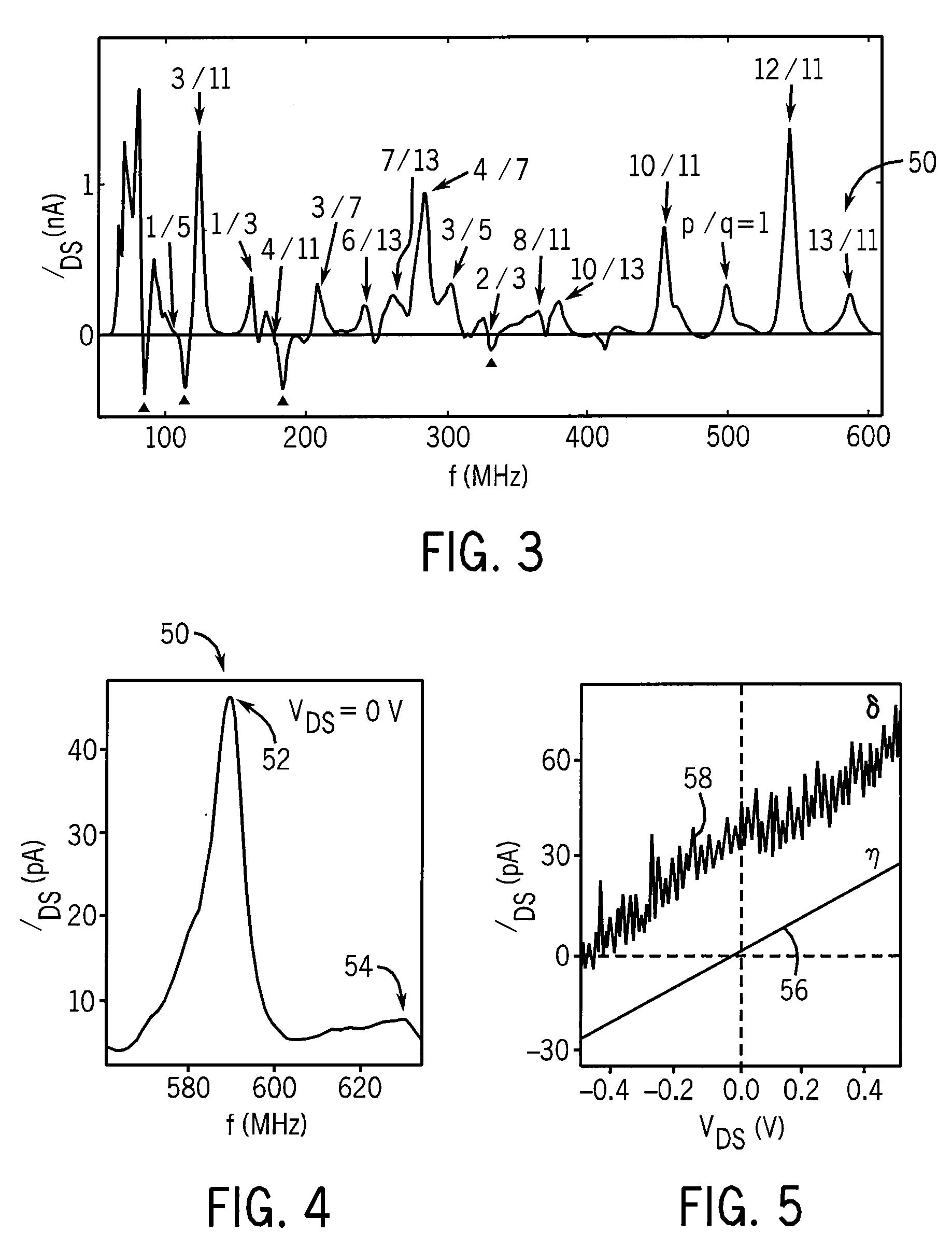Coupled electron shuttle providing electrical rectification
a technology of electron shuttle and electrical rectification, which is applied in the structure of radiating elements, resonance antennas, transmission, etc., can solve the problems of limited use of rectennas, lost power in the junction during the rectification process, and inability to extract power from low power density signals. , to achieve the effect of improving the design of the rectenna and low energy loss
- Summary
- Abstract
- Description
- Claims
- Application Information
AI Technical Summary
Benefits of technology
Problems solved by technology
Method used
Image
Examples
Embodiment Construction
[0035]Referring now to FIG. 1, antenna array 10 of the present invention may provide for multiple antenna elements 12 designed to receive electromagnetic radiation 14. The multiple antenna elements 12 maybe electrically interconnected in series or in parallel to provide for desired power voltage and current as will be described below.
[0036]Each antenna element 12 may, for example, be a dipole providing for a pair of arms 15, here shown in a spiral configuration, for broadband frequency sensitivity. The arms 15 may connect to a rectification element 16 for extracting power from the electromagnetic radiation 14 received by the antenna element 12. The rectification element 16 may be an individual rectifier or a full wave bridge of a type understood in the art comprised of one or more rectifiers 17.
[0037]Referring also to FIG. 2, each rectifier 17 may include a first and second conductor 18 and 20 opposed across a gap 22 containing a first and second elastically mounted conducting eleme...
PUM
 Login to View More
Login to View More Abstract
Description
Claims
Application Information
 Login to View More
Login to View More - R&D
- Intellectual Property
- Life Sciences
- Materials
- Tech Scout
- Unparalleled Data Quality
- Higher Quality Content
- 60% Fewer Hallucinations
Browse by: Latest US Patents, China's latest patents, Technical Efficacy Thesaurus, Application Domain, Technology Topic, Popular Technical Reports.
© 2025 PatSnap. All rights reserved.Legal|Privacy policy|Modern Slavery Act Transparency Statement|Sitemap|About US| Contact US: help@patsnap.com



